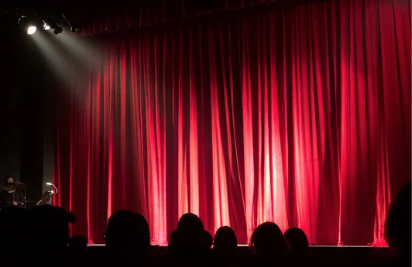Elnaz Rekabi Competes Without Hijab, The Iranian People’s Fight For Freedom
Oct 28, 2022
On Sunday, October 16, Iranian Athlete Elnaz Rekabi competed in the Asian Climbing Championships in Seoul, South Korea while not wearing a hijab. According to multiple sources, after the competition she completely vanished and was not heard from until the morning of Wednesday, October 19t, when she made an appearance in Tehran, Iran, and apologized for her lack of a headscarf, saying that it had accidentally fallen off.
Many believe that this is no accident at all, since all photos and videos of Rekabi from past competitions have shown her fully covered. The timing also lines up, in the past two months alone there has been a rise in protests against Iran’s enforcement of the hijab following the death of a 22-year-old woman, Mahsa Amini. Protests against the compulsory hijab have always existed, but the death of Amini has sparked levels of resistance and defiance that haven’t been seen in the country for decades.
An interview with the National Iranian American Council research director, Assal Rad gives some insight into why the hijab is mandatory. Following the 1979 Islamic Revolution, women have been required to wear a hijab in the country and also when officially representing Iran outside of the country. The Iranian revolutionaries wanted to enforce a strict, conservative dress code for women, with even one of the revolutionary leaders, Ayatollah Ruhollah, saying in 1979 that women who did not dress modestly did not know how to be useful to society. This dress code is enforced by Iran’s morality police, who also enforce policies dealing with religion and the mixing of sexes in public. These police are also able to give out any punishment they see fit, whether it’s a simple verbal warning or physical violence. For a more in-depth view into the morality police, there’s an interview with an Iranian Scholar who provides more details about their history.
Mahsa Amini was a 22-year-old woman who on September 13, was arrested by the morality police for wearing her hijab too loosely. She died three days later in police custody, with authorities saying that she had prior health conditions and had suffered a heart attack. Her family says that she had no health conditions and that the government is trying to cover up how she really died. Hundreds of people have banded together since her death, and are now protesting more than just the compulsory hijab.
On September 20, both men and women took to the streets chanting things like “women, life, freedom,” “death to the dictator” and “we are the children of war. Come on and fight, we’ll fight back” as women cut their hair and burned hijabs. On October 26 citizens gathered to mark the 40th day since Amini’s death, which is typical in Shiite Islam, in her hometown of Saquez. As police attempted to stop them, more anti-government chants like “this is a year of blood” and “the supreme leader will be toppled.” As more protests occur, it’s clear that it is no longer just a war on women, but instead a fight for freedom.
With a video from behind the news, they provide a simple understanding of their government. Iran’s government is a theocracy, a form of government whose leader leads following a divine figure. In Iran, this position is called the Supreme Leader who is appointed by religious officials called the Assembly of Experts. The assembly also has the power to dismiss supreme leaders, but so far have never done it.
The current supreme leader, who has held the position since 1989, is Ayatollah Ali Khamenei. He is also able to pick half of the members of the Guardian Council, a group that deals with Iranian politics. The other half is picked by the chief justice, who is also picked by the supreme leader. So close to all government officials are in the pocket of the supreme leader, which means that citizens have no say in anything, making their protests all the more impressive.





